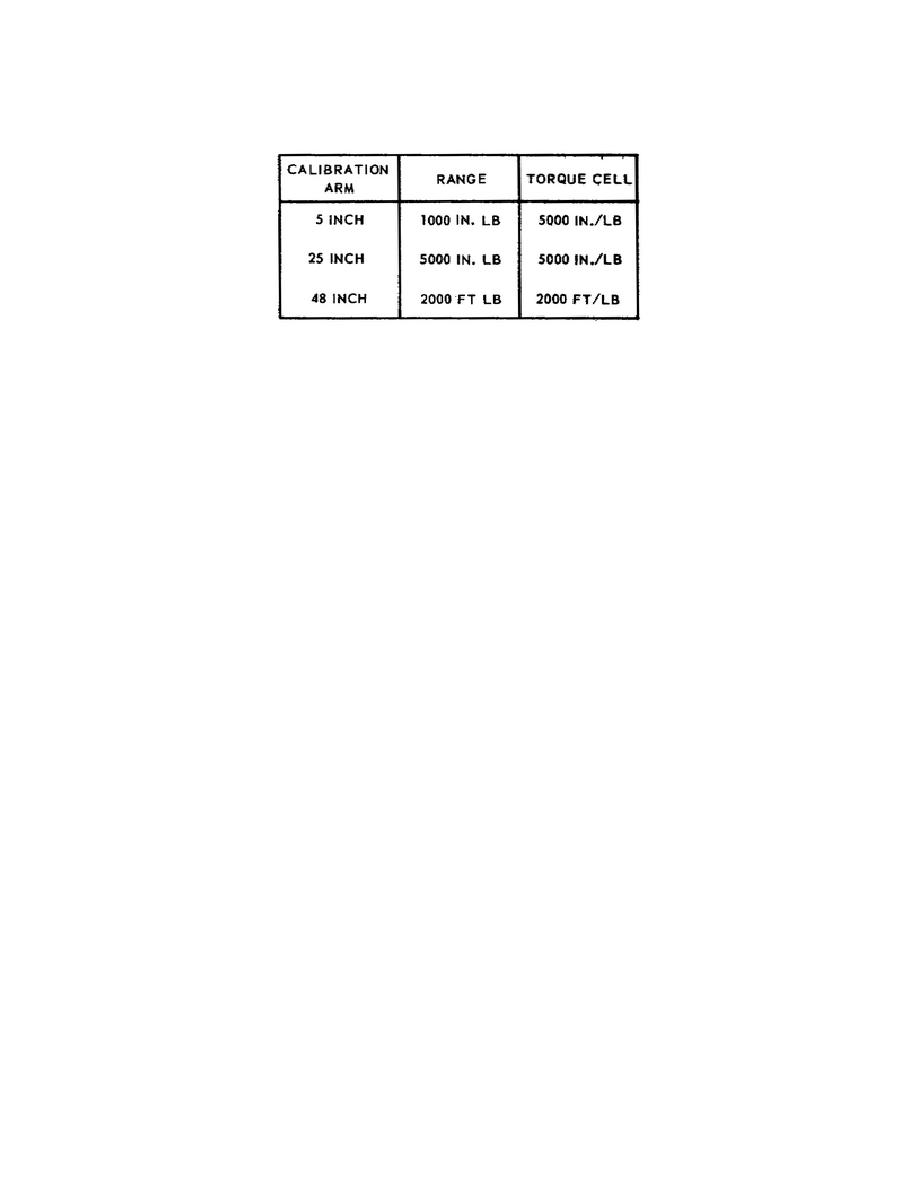
SM0486
TABLE 3.
Calibration Arm Size
c. Because no metal is perfectly elastic, calibration charts are made for
each individual proving ring. These charts indicate the amount of deformation for
different loads as checked against a standard. Another important factor in the use
of proving rings is temperature. Since proving rings are calibrated at a standard
temperature, use at other temperatures results in errors that must be compensated
for.
Therefore, a chart for temperature corrections is also provided for each
proving ring.
d. Accurate use of proving rings requires the use of both types of charts as
well as the use of the proper calibration arm.
Calibration and certification of
the proving ring is reaccomplished periodically by comparison with a standard of
greater accuracy.
If necessary, the correction charts are reaccomplished at this
time.
e. In using the proving ring to calibrate torque wrench calibrators, you must
be aware of several precautions. Proving rings are very precise instruments, and
they can easily be damaged beyond repair. Since large forces are involved in using
the proving ring, improper use can be very dangerous. Some of the more important
precautions are listed below.
(1) Be sure that you read and understand all of the instructions before
beginning a calibration procedure. Follow directions exactly and double check your
work.
It is recommended that two people perform the calibration procedure.
One
person can manipulate and read the proving ring and the other person can operate
the tester and read its dial indications.
(2) Be sure that the proving ring is positioned properly before force is
applied to it. If the proving ring is not positioned properly with respect to the
force applied to it, the ring may snap out of the calibrator and strike you or
other personnel in the area.
(3) Use extreme care in handling the proving ring to prevent dropping or
striking it.
A proving ring that has been dropped or jarred severely must be
recalibrated before use. Do not overload the proving ring.
101



 Previous Page
Previous Page
